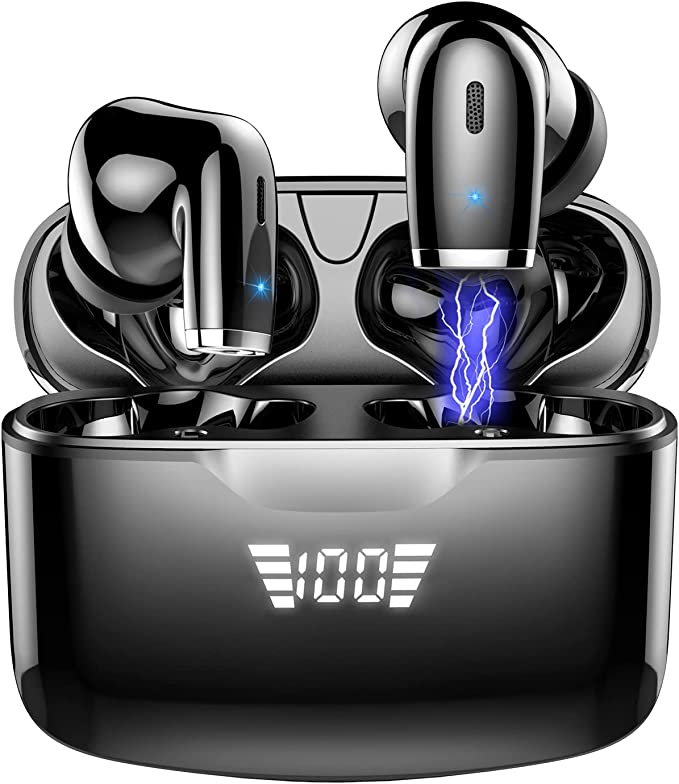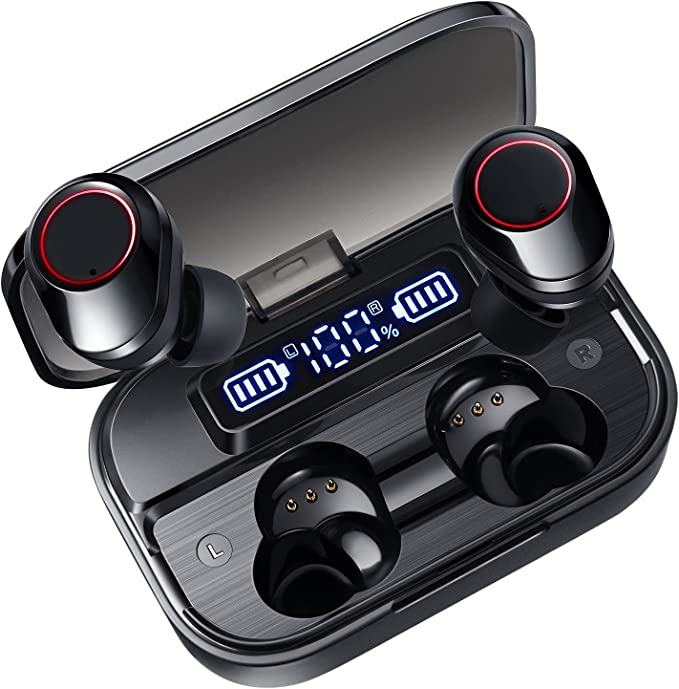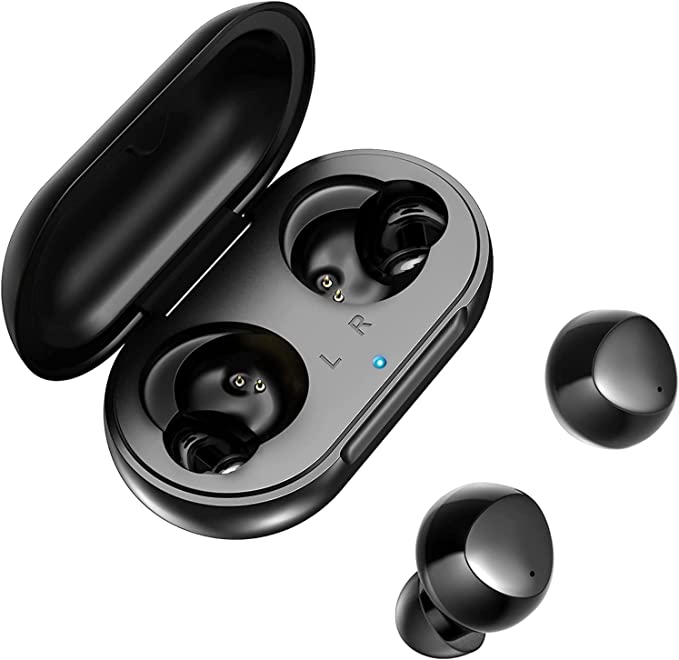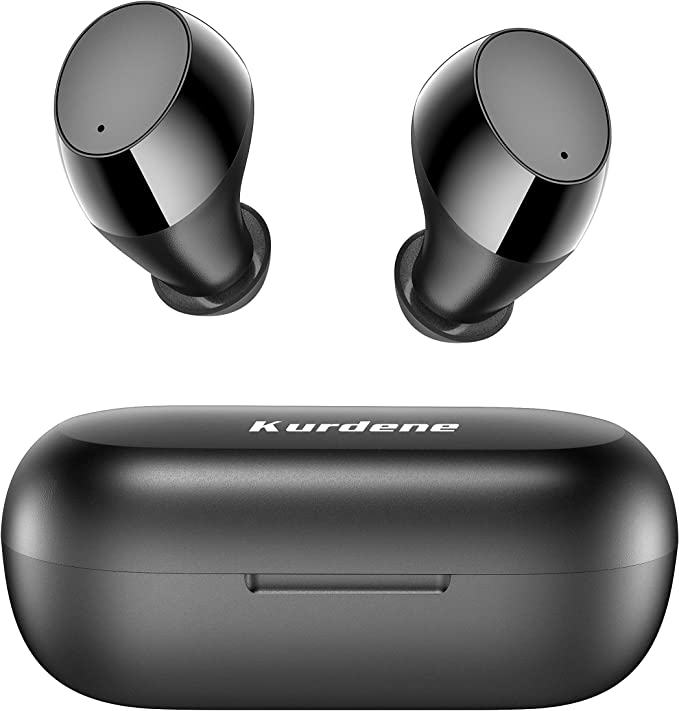BD&M BD10 Wireless Earbuds: Lightweight and Crisp Sound
Update on Sept. 9, 2025, 6:26 a.m.
How technologies once reserved for premium gadgets ended up in a device that costs less than lunch. A deep dive into the marvels of technological democratization.
There’s a certain kind of sticker shock that triggers disbelief, followed by suspicion. Seeing a pair of “HiFi Digital LED Display Stereo Gaming Earbuds” for $7.99 is one such moment. The immediate reaction is to dismiss it. It must be a scam, a toy, or simply junk. But what if it’s not? What if, instead, it’s a tiny, plastic monument to decades of relentless, invisible progress?
This isn’t a review or a recommendation. It’s an autopsy of a minor miracle. We’re going to use a device like the BD&M BD10 Wireless Earbuds not as a product to be judged, but as a lens. Through it, we can examine the powerful forces of standardization, algorithmic ingenuity, and material science that have quietly conspired to make the future ridiculously cheap.

The Unlikely King and the Invisible Handshake
Every time you pair a wireless device, you’re paying homage to a 10th-century Viking king. The name “Bluetooth” was inspired by Harald “Bluetooth” Gormsson, a ruler famed for uniting the disparate tribes of Denmark and Norway. The engineers who chose the name in the late 1990s saw a fitting parallel: a single, universal standard to unite the fragmented world of cables and proprietary connectors.
What began as a clunky, short-range cable replacement has evolved into a sophisticated symphony of efficiency. The earbuds in question boast Bluetooth 5.3, a specification that seems like a minor numerical update but represents a monumental leap in philosophy. Early Bluetooth was power-hungry and prone to temperamental fits. The modern standard, particularly its Low Energy (BLE) component, is built for a world of tiny, battery-powered devices that need to sip, not gulp, power.
This obsessive focus on efficiency is what makes a feature like “One Step Pairing” possible. When you flip open the case, the earbuds don’t just scream into the void; they use highly efficient advertising channels to announce their presence, allowing your phone to lock on almost instantly with minimal energy expenditure. The stability praised by users isn’t magic; it’s the result of improved channel classification and adaptive frequency hopping, allowing the signal to intelligently dodge interference from Wi-Fi networks, microwaves, and other devices. Bluetooth 5.3 is the unsung hero, the invisible handshake that has become so reliable we’ve forgotten how miraculous it truly is. It’s the culmination of a decades-long project to make connections seamless, stable, and, most importantly, cheap enough to embed in an $8 product.

The Art of the Quiet Conversation
Perhaps the most misunderstood term in consumer audio is “noise cancellation.” Most of us associate it with the serene bubble created by high-end over-ear headphones, a technology known as Active Noise Cancellation (ANC). ANC works by listening to the outside world and creating an inverse sound wave—an “anti-noise”—to erase it before it reaches your eardrum. It’s an incredible feat of physics, but it’s not what’s happening in most budget earbuds when they promise a “clear call.”
Instead, they employ a far more subtle, and in some ways more clever, bit of digital wizardry called CVC, or Clear Voice Capture. The BD&M BD10 specifies CVC 8.0, a technology developed by Qualcomm. Unlike ANC, which protects the listener, CVC protects the person on the other end of the line. It’s not for you; it’s for them.
At its heart, CVC is a triumph of Digital Signal Processing (DSP). Imagine you’re in a bustling café. Your voice, the clatter of cups, the barista’s call, and the distant traffic all enter the earbud’s microphones as a single, messy sound wave. The DSP chip’s job is to act like an expert audio engineer. It uses a sophisticated algorithm, trained on thousands of hours of speech, to identify the specific frequency patterns of the human voice. It then digitally filters out everything that doesn’t match that pattern. It’s performing a kind of surgical strike on the audio signal, isolating your voice and suppressing the surrounding chaos. More advanced systems use multiple microphones to perform “beamforming,” creating a directional cone of sound that focuses on your mouth, further ignoring off-axis noise.
So when you’re on a call, walking down a windy street, and the person on the other end can hear you clearly, you’re witnessing a real-time algorithmic performance. A tiny, low-power chip is executing millions of calculations per second to clean up reality. The fact that this complex software can now run on hardware cheap enough for an $8 device is a testament to the relentless march of Moore’s Law.

Pocket-Sized Power Plants
The entire promise of “true wireless” hinges on a technology we take for granted: the battery. The freedom these devices offer is directly proportional to the amount of energy we can cram into a minuscule space. The engine of this revolution is the Lithium-Polymer (Li-Po) battery. Unlike the rigid, cylindrical cells of old, Li-Po batteries use a gel-like electrolyte, allowing them to be molded into virtually any shape. This flexibility is what allows an earbud to be ergonomically sculpted to the human ear while still housing a power source.
A single earbud holds a tiny 45mAh battery, enough for about four hours of music. This figure seems small until you consider the ecosystem. The charging case is not just a box; it’s a mothership, a portable power bank with its own 200mAh battery. This symbiotic relationship is the key to all-day use.
But the real sign of progress here is the inclusion of a Smart LCD Digital Display. For years, we deciphered the cryptic language of blinking LEDs—one blink for low, solid for full. A precise percentage readout was a premium feature. Its presence here signifies that the components required—a simple microcontroller to measure voltage and a tiny, low-power screen—have become so commoditized that they no longer impact the final cost in a meaningful way. It also addresses a core user anxiety. The display offers transparency and control, transforming the user’s relationship with the device from one of guesswork to one of certainty.
Add to this a USB Type-C port, the now-universal standard that thankfully killed the one-way-only Micro-USB. Its inclusion means faster, more efficient power transfer, enabling quick top-ups that provide hours of listening from just a few minutes of charging.

The Sum of the Parts
It’s easy to look at an $8 pair of earbuds and see a disposable gadget. But that’s missing the story. The BD&M BD10, and countless devices like it, are remarkable not because they are the best, but because they exist at all. They are physical proof of the principle of technological democratization.
They represent a tipping point where Bluetooth 5.3 is no longer a feature to advertise but a baseline to expect. Where sophisticated call-filtering algorithms are not a luxury for business headsets but a standard for everyone. Where efficient power management and transparent displays are no longer premium add-ons but solved problems.

This device is a composite of countless unseen victories—in standardization committees, in chemical engineering labs, and in the relentless optimization of global supply chains. It is the end result of a long, quiet, and collective effort to make the future accessible, affordable, and, ultimately, so commonplace that we forget to be amazed. And that, perhaps, is the most amazing part of all.



























































